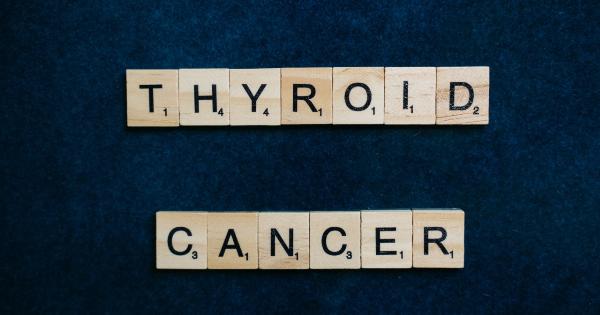Thyroid nodules are common growths or lumps within the thyroid gland, a gland located at the base of the neck that produces hormones that regulate body metabolism.
While most thyroid nodules are not cancerous, it’s important to monitor and evaluate them to ensure they don’t develop into something more serious.
Types of Thyroid Nodules
Thyroid nodules can be classified based on their characteristics:.
Non-Cancerous Thyroid Nodules
The majority of thyroid nodules are non-cancerous, also known as benign nodules. These nodules typically don’t cause any symptoms and don’t require treatment unless they become large enough to cause difficulty breathing or swallowing.
Cancerous Thyroid Nodules
Only a small percentage of thyroid nodules are cancerous. Papillary and follicular thyroid cancers are the most common types of thyroid cancer and are highly treatable when detected early.
Functional Thyroid Nodules
Functional thyroid nodules are nodules that produce thyroid hormone, leading to an overactive thyroid gland. These nodules can cause symptoms such as weight loss, anxiety, and tremors.
Colloid Thyroid Nodules
Colloid nodules are the most common type of thyroid nodule. They are made up of a collection of thyroid cells and are non-cancerous. Most people with colloid nodules don’t experience any symptoms.
Symptoms of Thyroid Nodules
Thyroid nodules may not always cause symptoms, but when they do, the symptoms may include:.
- A visible lump or swelling in the neck
- Difficulty swallowing
- Difficulty breathing
- Hoarseness or voice changes
- Unexplained weight loss or weight gain
- Fatigue
Diagnosing Thyroid Nodules
To diagnose thyroid nodules, your doctor may perform:.
Physical Exam
Your doctor will examine your neck for any visible lumps or swelling. They may also ask you to swallow to feel for any nodules that move with swallowing.
Blood Tests
Blood tests can determine if the thyroid nodule is producing too much or too little thyroid hormone. Blood tests can also help rule out thyroid cancer.
Ultrasound
Ultrasound is the most common and effective method for evaluating thyroid nodules. An ultrasound can determine the size and shape of the nodule, as well as if it’s solid or filled with fluid.
Fine-Needle Aspiration Biopsy
A biopsy involves using a small needle to remove a tissue sample from the thyroid nodule. The sample is then examined under a microscope for signs of cancer.
Treatment for Thyroid Nodules
The treatment for thyroid nodules depends on several factors, including the nodule’s size, symptoms, and whether or not it’s cancerous.
Watchful Waiting
Most thyroid nodules don’t require any treatment and can be monitored with regular check-ups and ultrasounds to ensure they haven’t grown or changed.
It’s important to notify your doctor if you experience any new or worsening symptoms.
Thyroid Hormone Suppression Therapy
If the nodule is producing too much thyroid hormone, your doctor may prescribe medication to suppress thyroid hormone production and shrink the nodule.
Fine-Needle Aspiration Biopsy
If a biopsy confirms that the nodule is cancerous, the typical treatment is surgery to remove the thyroid gland (thyroidectomy), followed by radioactive iodine treatment to eliminate any remaining cancer cells.
Surgery
If the nodule is causing difficulty breathing or swallowing or is cosmetically unappealing, surgery may be necessary to remove the nodule and a portion of the thyroid gland.
Prevention
While there’s no sure way to prevent thyroid nodules, you can take steps to reduce your risk:.



























